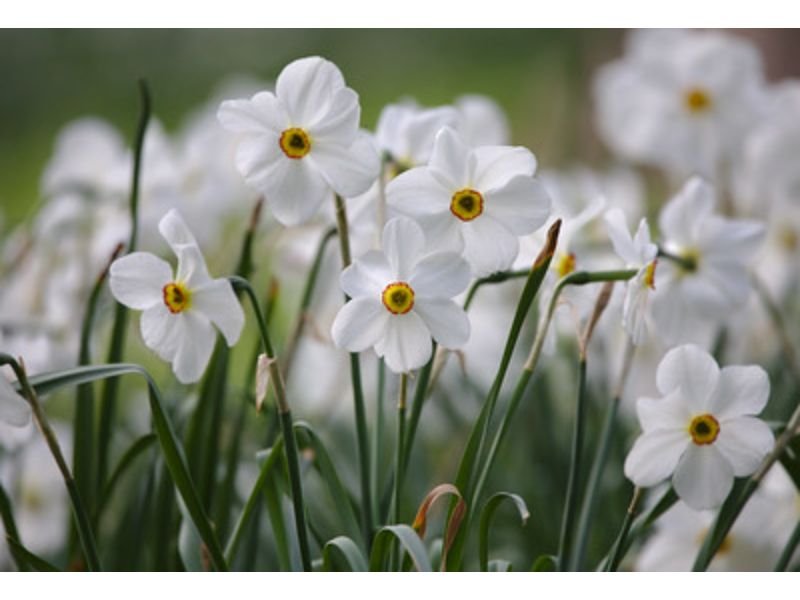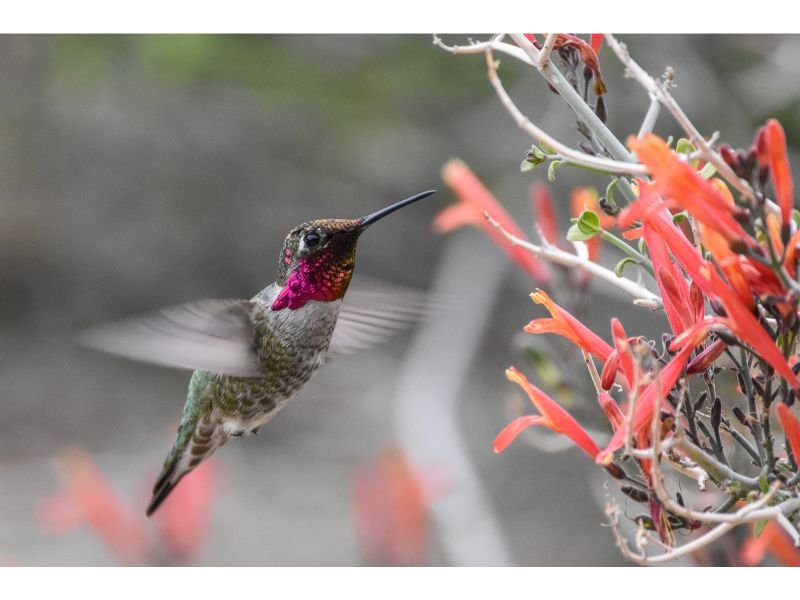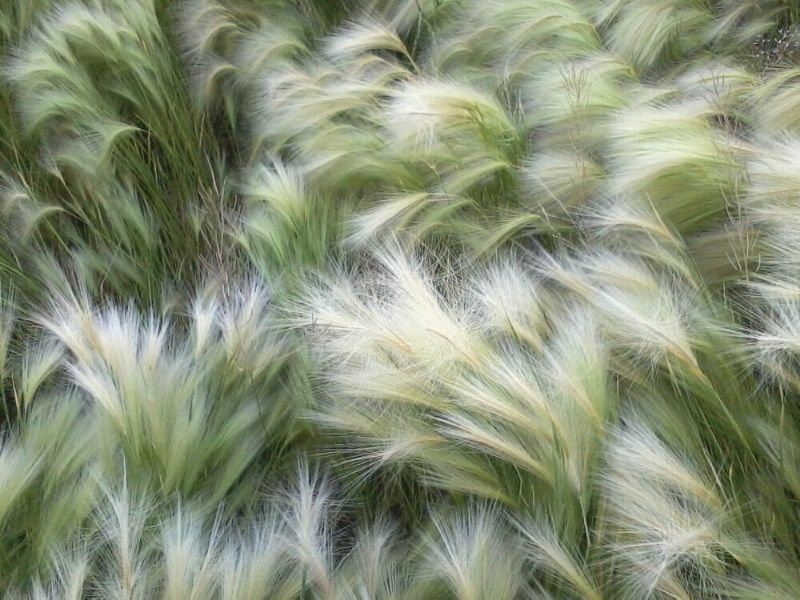Nature’s palette is rich with an array of colors that never ceases to amaze. Among these breathtaking creations, all red flowers with yellow centers hold a special place. Their striking contrast and vibrant hues add a burst of life to any garden or bouquet. In this article, we’ll delve into the world of these remarkable blossoms, exploring their diverse types, care requirements, and the hidden meanings they convey.

Table of Contents
All Red Flowers with Yellow Center: A Visual Delight
All red flowers with yellow centers are a true visual delight. These blooms showcase a harmonious blend of fiery red petals and a bright yellow center, creating an eye-catching and unforgettable display. The stark contrast between the red and yellow hues makes these flowers stand out in any landscape.
Types of All Red Flowers with Yellow Center
There is a wide variety of all-red flowers with yellow centers, each possessing its own unique charm. Let’s take a closer look at some of the most popular types:
1. Rosa ‘Double Delight’

The Rosa ‘Double Delight’ is an iconic hybrid tea rose, celebrated for its exceptional beauty and rich fragrance. Its velvety, deep red petals are a visual feast, complemented by a central golden-yellow heart.
This rose variety typically grows as a tall, upright bush, producing one stunning bloom per stem. ‘Double Delight’ roses are renowned for their longevity, making them ideal for cut flower arrangements and as focal points in gardens. These roses are not only visually striking but also evoke a delightful scent, making them a cherished choice among rose enthusiasts and gardeners.
2. Hemerocallis ‘Crimson Pirate’
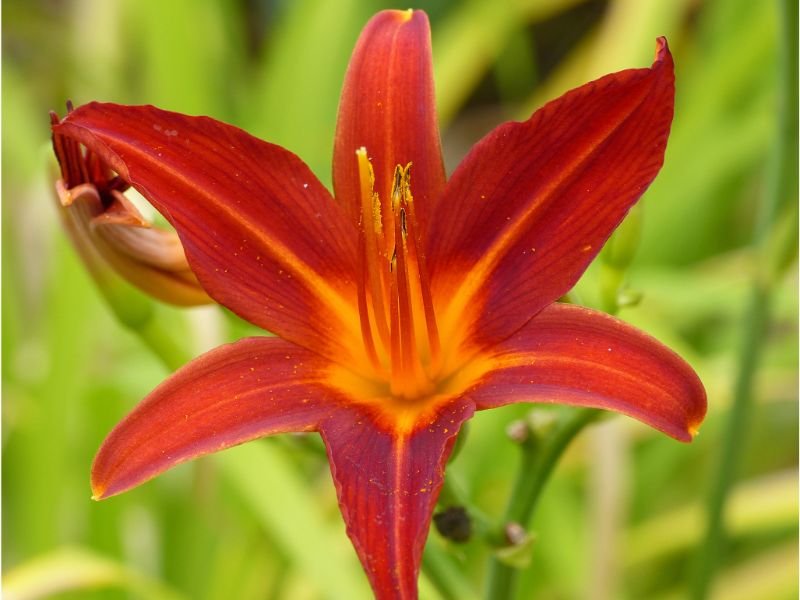
The Hemerocallis ‘Crimson Pirate’ is a captivating daylily known for its dramatic appearance. Its intense crimson-red petals are adorned with a radiant, sunlit yellow throat.
These perennial daylilies are characterized by their resilience and adaptability, thriving in various garden settings. ‘Crimson Pirate’ daylilies bloom profusely during the summer, creating a vibrant and eye-catching display. Their vivid colors and contrasting shades make them standout specimens in garden beds and borders, attracting pollinators and garden admirers alike.
3. Dahlia ‘Fire Pot’
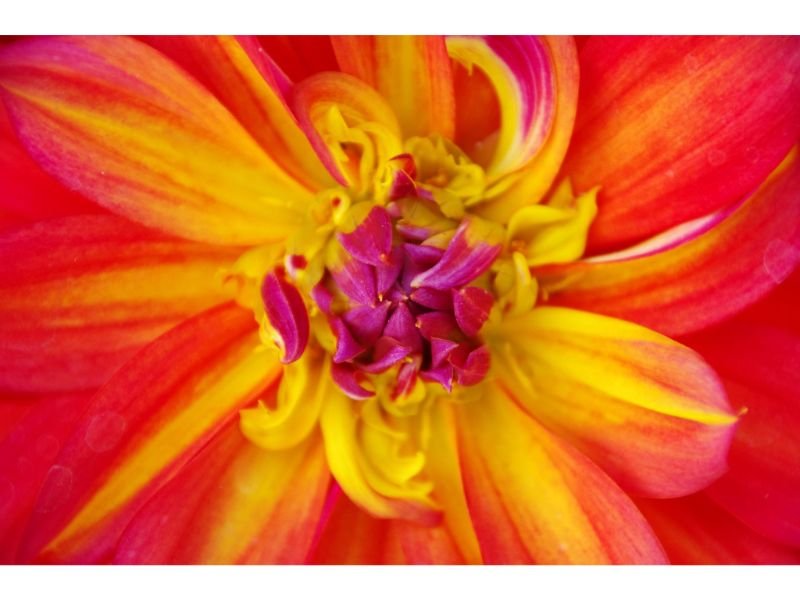
Dahlia ‘Fire Pot’ is a captivating dahlia variety celebrated for its fiery and vibrant display. The petals of ‘Fire Pot’ dahlia are a striking red-orange hue, creating a bold and dynamic visual impact.
This dahlia variety typically produces medium to large-sized blooms with an intricate layering of petals that adds depth and texture to any garden or floral arrangement. The central disc of ‘Fire Pot’ dahlias is a brilliant golden color, enhancing the dramatic effect of these stunning flowers. Known for their diversity in flower shapes and sizes, dahlias, especially ‘Fire Pot,’ are a favorite among gardeners and florists.
4. Echinacea ‘Hot Papaya’

Echinacea ‘Hot Papaya’ is a coneflower variety that demands attention with its vivid red-orange petals and a prominent coppery-brown cone. The striking color contrast of this coneflower makes it a unique and memorable addition to garden landscapes.
Coneflowers, including ‘Hot Papaya,’ are renowned for their hardiness, attracting pollinators like bees and butterflies. These perennials add both color and texture to garden beds and are often used to create eye-catching focal points or naturalized meadow-style plantings. ‘Hot Papaya’ coneflowers infuse gardens with a touch of exotic allure, making them a must-have for flower enthusiasts.
5. Gerbera Daisy (Gerbera jamesonii)

Gerbera daisies are celebrated for their cheerful and colorful appearance. Some varieties of Gerbera daisies feature striking red petals with a contrasting yellow or black center.
These daisies, with their classic daisy-like appearance, are popular in gardens and floral arrangements. They typically have long stems and large, showy blooms, making them prized cut flowers. Gerbera daisies symbolize happiness and joy, making them a popular choice for bouquets and garden borders.
6. Coreopsis (Coreopsis grandiflora)
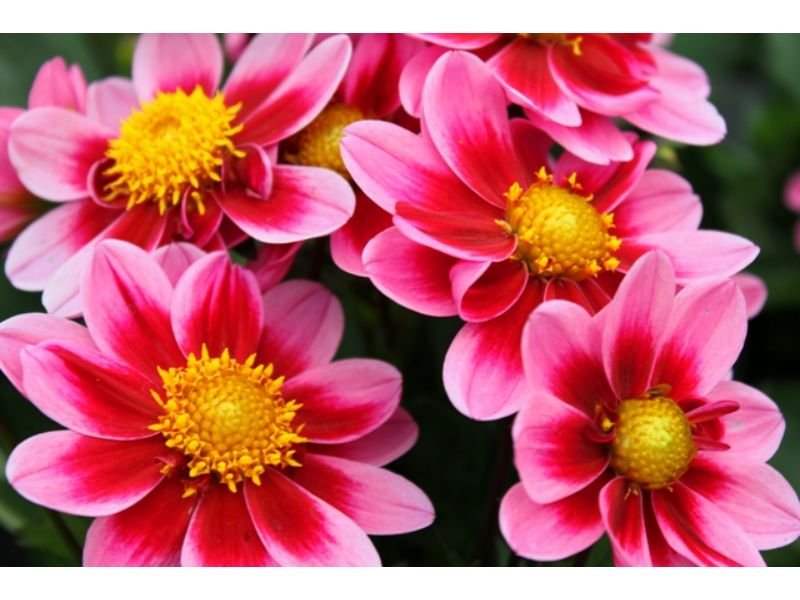
Certain coreopsis varieties, such as ‘Jive,’ exhibit red petals with a prominent yellow center, earning them the common name “tickseed.” These hardy perennials are known for their profusion of daisy-like flowers that create vibrant, long-lasting displays in gardens.
Coreopsis are easy to grow and attract beneficial pollinators, making them a valuable addition to wildlife-friendly landscapes. The contrast of red petals against a yellow center adds a captivating visual element to garden beds and borders.
7. Gazania (Gazania rigens)
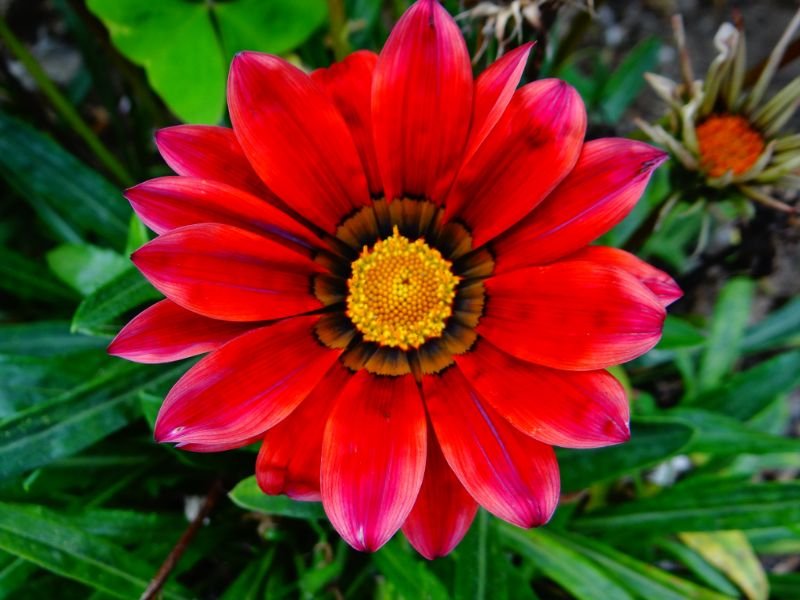
Gazania flowers are characterized by their bold red or orange petals that encircle a bright yellow center, giving them the nickname “Treasure Flowers.” These low-growing perennials are particularly well-suited for sunny, arid landscapes and are known for their drought tolerance.
Gazanias produce an abundance of colorful blooms, adding a vibrant touch to rock gardens, containers, and coastal landscapes. Their striking color combination and resilience make them a popular choice for adding visual interest to hot and dry garden environments.
8. Blanket Flower (Gaillardia)
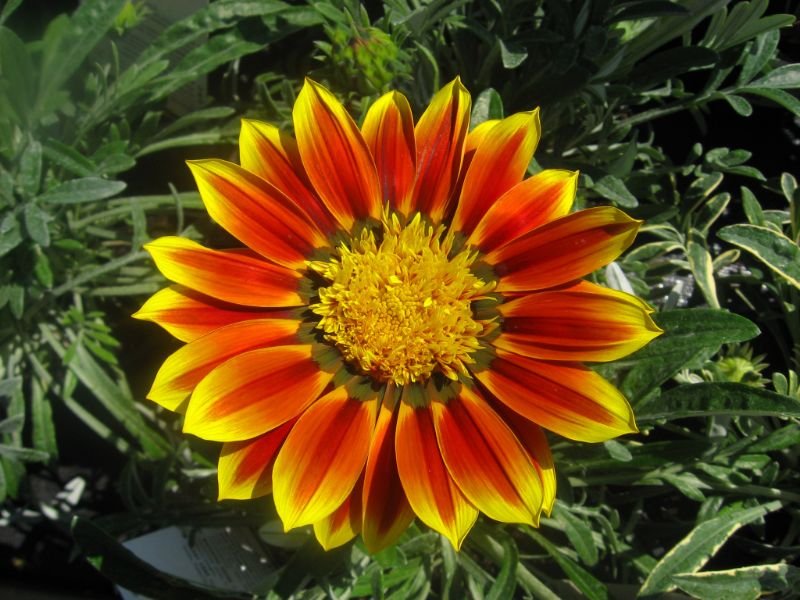
Blanket flowers are known for their vibrant and daisy-like appearance. Their red or orange petals create a striking contrast with a central disk in shades of yellow or reddish-brown, resembling miniature sunflowers.
Gaillardias are hardy perennials that bloom profusely throughout the summer and into the fall, making them valuable additions to gardens designed for extended seasonal interest. Their vibrant colors and classic wildflower charm make them favorites for attracting pollinators and creating naturalistic garden landscapes, including wildflower meadows and prairie-style gardens. Gaillardias are reliable and low-maintenance choices for gardeners seeking long-lasting color and wildlife habitat support.
9. Mexican Hat (Ratibida columnifera)
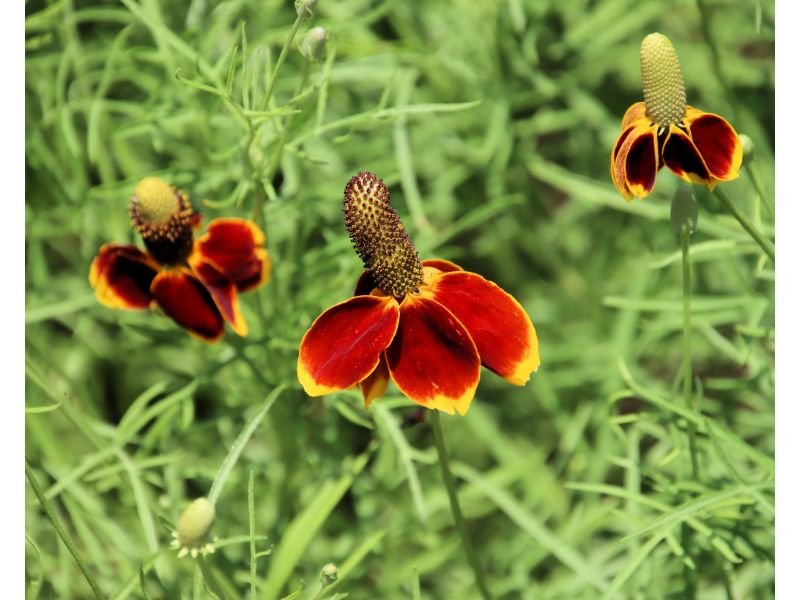
Mexican Hat flowers, scientifically known as Ratibida columnifera, are distinctively unique in their appearance. These wildflowers feature vibrant red, drooping petals that form a cone-like shape. The central cone is prominent and can vary in color from yellow to brownish-black, creating a striking contrast with the red petals.
This distinctive combination of colors and shapes makes Mexican Hat flowers a standout in natural landscapes. They are typically found in prairies, meadows, and open woodlands, adding a touch of wild beauty to native plantings. Mexican Hat flowers are also known for their attractiveness to pollinators, making them valuable additions to wildlife-friendly gardens.
10. Indian Paintbrush (Castilleja)

Indian Paintbrush, belonging to the Castilleja genus, is a group of wildflowers known for their striking appearance. These wildflowers are characterized by their tubular, red petals that resemble a paintbrush dipped in red paint. The unique feature of Indian Paintbrush is the colorful tip of their petals, which are typically yellow or greenish-yellow. The combination of red and yellow or greenish-yellow creates a vibrant and eye-catching display in natural landscapes.
Indian Paintbrushes are often found in meadows, prairies, and alpine environments, where they add a burst of color and provide nectar for pollinators. These wildflowers are not only visually stunning but also an integral part of native ecosystems, supporting biodiversity and adding natural beauty to their surroundings. Gardeners seeking to recreate the beauty of the wild can incorporate Indian Paintbrushes into native plant gardens and naturalistic landscapes.
Cultivating All Red Flowers with Yellow Center
While these blooms are undeniably captivating, they require proper care to thrive. Here are some essential tips for cultivating all red flowers with yellow centers:
1. Choosing the Right Location
Select a well-draining spot with ample sunlight for your red flowers with yellow centers. Adequate sunlight ensures optimal blooming and vibrant colors.
2. Proper Soil Preparation
Prepare the soil by adding organic matter to improve drainage and fertility. These flowers prefer slightly acidic to neutral soil pH levels.
3. Watering and Moisture
Keep the soil consistently moist but not waterlogged. Deep, infrequent watering is preferable to shallow, frequent watering.
4. Mulching
Apply a layer of mulch around the base of the plants to conserve moisture, suppress weeds, and regulate soil temperature.
5. Deadheading Spent Blooms
Regularly remove faded flowers to encourage continuous blooming and maintain the overall appearance of the plant.
The Symbolism Behind All Red Flowers with Yellow Center
In the language of flowers, red is often associated with passion, love, and courage, while yellow symbolizes happiness and friendship. When combined with all red flowers with yellow centers, these hues create a meaningful blend of emotions. These flowers can be gifted to convey feelings of intense love and joyous camaraderie.
The symbolism behind all red flowers with a yellow center can also vary depending on cultural, historical, and personal interpretations. Here are some common symbolic meanings associated with these flowers:
- Passion and Love: Red is often associated with deep emotions, especially love and passion. When combined with a vibrant yellow center, it can symbolize intense and fiery love.
- Vibrancy and Energy: Red is a color that represents energy and vitality. The yellow center can amplify this symbolism, signifying a burst of energy and enthusiasm.
- Contrast and Balance: The striking contrast between red and yellow creates a sense of balance and harmony. This symbolism can be interpreted as finding equilibrium or harmony in life and relationships.
- Attraction and Magnetism: Red flowers with yellow centers can symbolize attraction and magnetism. They draw attention and captivate with their vivid colors.
- Courage and Confidence: Red is often associated with qualities like courage and confidence. The yellow center can enhance these traits, symbolizing inner strength and self-assuredness.
- Celebration and Joy: Red and yellow are both colors associated with celebration and joy. Together, they can symbolize festive occasions and happiness.
- Endurance and Resilience: Red flowers with yellow centers may also represent endurance and resilience, as they thrive and stand out even in challenging conditions.
- Friendship and Loyalty: In some contexts, the combination of red and yellow can symbolize strong friendships and unwavering loyalty.
- Attention and Focus: The vibrant colors can symbolize the need to pay attention and stay focused on a particular goal or aspect of life.
- Transformation and Growth: Red and yellow can symbolize transformation and growth, signifying change and development in various aspects of life.
It’s important to note that flower symbolism can vary across cultures and personal beliefs, so the meaning of red flowers with yellow centers may differ depending on individual perspectives and cultural contexts. Additionally, the specific type of flower may also influence its symbolic meaning.
Can you recommend drought-tolerant red flowers with yellow centers for xeriscaping?
Xeriscaping, or water-efficient landscaping, often involves selecting drought-tolerant plants that can thrive with minimal water. Here are some red flowers with yellow centers that are suitable for xeriscaping:
- Gazania (Gazania rigens): Gazanias are known for their bold red or orange petals and bright yellow centers. They are excellent choices for xeriscaping because they are highly drought-tolerant and can withstand dry conditions.
- Blanket Flower (Gaillardia): Blanket flowers are not only colorful with red or orange petals and yellow centers but also well-suited for xeriscaping. They are hardy, drought-tolerant perennials that can thrive in low-water environments.
- Mexican Hat (Ratibida columnifera): Mexican Hat flowers, with their unique red petals and prominent yellow to brownish-black center cones, are adapted to drought-prone areas and make attractive additions to xeriscapes.
- Coreopsis (Coreopsis grandiflora): Certain coreopsis varieties, like ‘Jive,’ have red petals and a yellow center, and they are known for their drought tolerance. These perennials can thrive in dry conditions once established.
Choosing native or drought-tolerant plant species like these can help conserve water while still adding vibrant colors to your xeriscape garden.
Are there annual or perennial red flowers with yellow centers?
Yes, there are both annual and perennial red flowers with yellow centers:
- Annuals: Annual flowers complete their life cycle within one growing season. Some annuals with red petals and yellow centers include Marigolds (Tagetes spp.), Zinnias (Zinnia spp.), and Sunflowers (Helianthus annuus). These can provide vibrant color in your garden for one season and typically need to be replanted each year.
- Perennials: Perennial flowers come back year after year. Several perennial options with red petals and yellow centers have been mentioned in previous responses, such as ‘Double Delight’ roses, ‘Crimson Pirate’ daylilies, ‘Hot Papaya’ echinacea, and ‘Fire Pot’ dahlias. Perennials require less maintenance once established and provide long-lasting beauty in your garden.
When planning your garden, you can choose a mix of annuals and perennials to ensure continuous blooms and color throughout the seasons.
FAQs
Q: Do all red flowers with yellow centers require full sunlight?
A: Yes, most of these flowers thrive in full sunlight, which enhances their vibrant colors and overall health.
Q: Can I grow these flowers in containers?
A: Absolutely! Many of these blooms can be grown successfully in containers, as long as they receive sufficient sunlight and proper care.
Q: What is the best way to prevent diseases in these plants?
A: Ensuring good air circulation, avoiding overhead watering, and practicing proper sanitation in your garden can help prevent common diseases.
Q: Are these flowers attractive to pollinators?
A: Yes, the bright colors and open structure of these flowers often attract pollinators like bees and butterflies.
Q: Can I use these flowers for floral arrangements?
A: Certainly! The striking appearance of all red flowers with yellow centers makes them a favorite choice for eye-catching floral displays.
Q: Do these flowers have any cultural or historical significance?
A: In various cultures, red and yellow hold symbolic meanings. Red signifies love and passion, while yellow represents friendship and positivity.
Conclusion
The allure of all red flowers with yellow centers is undeniable. These stunning blooms not only showcase nature’s creativity but also embody a fusion of emotions, from fiery passion to joyful camaraderie. By understanding their types, care requirements, and symbolism, you can bring the vibrant beauty of these flowers into your own garden or home. So, why not embrace the harmonious blend of red and yellow that nature has to offer?

Gardening is my passion and growing plants indoors has always been a stress relief for me. Grow a banana tree in my apartment once (although failed to produce bananas).

